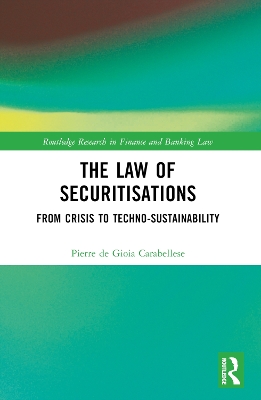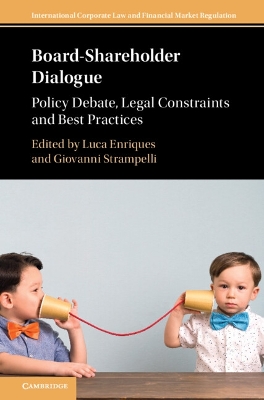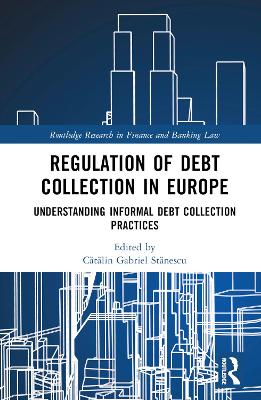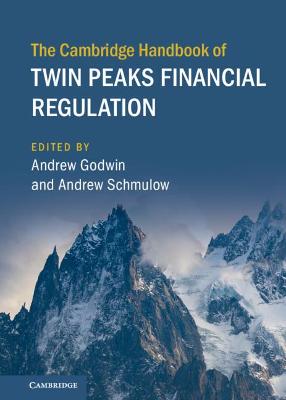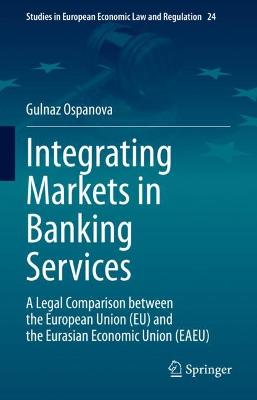Future of High-Cost Credit
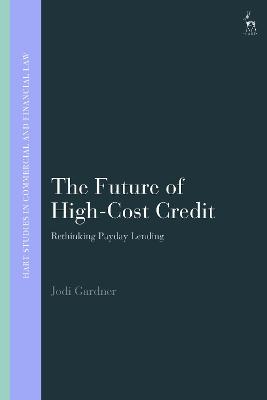 portes grátis
portes grátis
Future of High-Cost Credit
Rethinking Payday Lending
Gardner, Dr Jodi
Bloomsbury Publishing PLC
07/2022
264
Dura
Inglês
9781509939350
15 a 20 dias
Descrição não disponível.
1. Introduction
1.1. Payday Problems
1.2. Why High-Cost Credit?
1.3. Method, Scope and Jurisdiction
1.4. Outline
PART I
PHILOSOPHICAL CONTEXT: THE CONCEPTS OF HIGH-COST CREDIT
2. High-Cost Credit in the UK
2.1. How is High-Cost Credit Regulated?
2.1.1. The History of Moneylending Regulation
2.1.2. The Office of Fair Trading
2.1.3. The Financial Conduct Authority
2.1.4. Non-Regulatory Legal Enforcement
2.1.5. What Can We Learn?
2.2. What are the Challenges to Regulation?
2.2.1. Victim Blaming
2.2.2. Inadequate Engagement with the Market
2.2.3. What Can We Do?
2.3. Conclusion
3. Freedom
3.1. What is Freedom?
3.2. The History of Freedom
3.3. Justifying Freedom
3.3.1. Consent
3.3.2. Human Rights Approaches
3.3.3. Responsibilisation and Financialisation
3.3.4. Differing Approaches to Financial and Physical Products
3.4. Examples of Freedom
3.4.1. Restrictions on Who Can Lend
3.4.2. Disclosure Obligations and Advertising Restrictions
3.4.3. Cooling-Off Rights
3.4.4. Unfair Relationship Test
3.4.5. Vitiating Factors
3.5. Limitations of Freedom
3.5.1. Failure of Disclosure
3.5.2. Lack of Meaningful Choice
3.5.3. Poverty
3.6. Conclusion
4. Regulation
4.1. What is Regulation?
4.2. The History of Regulation
4.2.1. Usury, Religion and High-Cost Credit
4.2.2. The Development of Regulation
4.2.3. What Can We Learn?
4.3. Explanations for Regulation
4.3.1. Preventing Harmful Outcomes
4.3.2. Stopping Unconscionable Behaviour
4.3.3. Defending the Vulnerable
4.4. Examples of Regulation
4.4.1. Amending or Prohibiting Contract Terms
4.4.2. Prohibiting or Limiting Interest
4.4.3. Responsible Lending Obligations
4.4.4. Unfair Terms Legislation
4.4.5. Common Law Protections
4.5. Limitations of Regulation
4.5.1. Overlap with Limitations of Freedom
4.5.2. Illegal Lending
4.5.3. Financial Exclusion
4.6. Conclusion
5. A Social Minimum
5.1. What is a Social Minimum?
5.2. The History of A Social Minimum
5.2.1. Religious and Charitable Obligations
5.2.2. The Poor Laws
5.2.3. The Beveridge Report
5.2.4. After the 'Welfare State'
5.3. Explanations for a Social Minimum
5.3.1. Equality and Liberal Democracy
5.3.2. Government Duty
5.3.3. Social Minimum and Happiness
5.4. Examples of a Social Minimum Provision
5.4.1. Welfare Provision
5.4.2. Bankruptcy Relief
5.4.3. Vitiating Factors
5.5. Limitations of a Social Minimum
5.5.1. Impact on Property Rights
5.5.2. Responsibility for the Social Minimum
5.5.3. Moral Hazards
5.6. Conclusion
PART II
THE SOCIAL CONTEXT: IDENTIFYING HIGH-COST CREDIT BORROWERS
6. The Lived Experience
6.1. Research Method and Results
6.1.1. Methodology of Stakeholder Interviews
6.1.2. Methodology of Borrower Interviews
6.1.3. Interview Results
6.2. Financially Secure Borrowers
6.2.1. Lending Scenarios
6.2.2. Application to High-Cost Credit Concepts
6.2.3. Application to Current Legal Approach
6.3. Financially Insecure Borrowers
6.3.1. Lending Scenarios
6.3.2. Application to High-Cost Credit Concepts
6.3.3. Application to Current Legal Approach
6.4. Significantly Impaired Borrowers
6.4.1. Lending Scenarios
6.4.2. Application to High-Cost Credit Concepts
6.4.3. Application to Current Legal Approach
6.5. Conclusion
7. Future Directions
7.1. Law Reform Recommendations
7.1.1. Enhanced and Meaningful Disclosure
7.1.2. Responsible Lending Obligations
7.1.3. Opt Out Processes
7.2. Social Welfare Responses
7.2.1. Providing a Social Minimum
7.2.2. Maintaining a Social Minimum
7.3. Further Research
8. Conclusion
1.1. Payday Problems
1.2. Why High-Cost Credit?
1.3. Method, Scope and Jurisdiction
1.4. Outline
PART I
PHILOSOPHICAL CONTEXT: THE CONCEPTS OF HIGH-COST CREDIT
2. High-Cost Credit in the UK
2.1. How is High-Cost Credit Regulated?
2.1.1. The History of Moneylending Regulation
2.1.2. The Office of Fair Trading
2.1.3. The Financial Conduct Authority
2.1.4. Non-Regulatory Legal Enforcement
2.1.5. What Can We Learn?
2.2. What are the Challenges to Regulation?
2.2.1. Victim Blaming
2.2.2. Inadequate Engagement with the Market
2.2.3. What Can We Do?
2.3. Conclusion
3. Freedom
3.1. What is Freedom?
3.2. The History of Freedom
3.3. Justifying Freedom
3.3.1. Consent
3.3.2. Human Rights Approaches
3.3.3. Responsibilisation and Financialisation
3.3.4. Differing Approaches to Financial and Physical Products
3.4. Examples of Freedom
3.4.1. Restrictions on Who Can Lend
3.4.2. Disclosure Obligations and Advertising Restrictions
3.4.3. Cooling-Off Rights
3.4.4. Unfair Relationship Test
3.4.5. Vitiating Factors
3.5. Limitations of Freedom
3.5.1. Failure of Disclosure
3.5.2. Lack of Meaningful Choice
3.5.3. Poverty
3.6. Conclusion
4. Regulation
4.1. What is Regulation?
4.2. The History of Regulation
4.2.1. Usury, Religion and High-Cost Credit
4.2.2. The Development of Regulation
4.2.3. What Can We Learn?
4.3. Explanations for Regulation
4.3.1. Preventing Harmful Outcomes
4.3.2. Stopping Unconscionable Behaviour
4.3.3. Defending the Vulnerable
4.4. Examples of Regulation
4.4.1. Amending or Prohibiting Contract Terms
4.4.2. Prohibiting or Limiting Interest
4.4.3. Responsible Lending Obligations
4.4.4. Unfair Terms Legislation
4.4.5. Common Law Protections
4.5. Limitations of Regulation
4.5.1. Overlap with Limitations of Freedom
4.5.2. Illegal Lending
4.5.3. Financial Exclusion
4.6. Conclusion
5. A Social Minimum
5.1. What is a Social Minimum?
5.2. The History of A Social Minimum
5.2.1. Religious and Charitable Obligations
5.2.2. The Poor Laws
5.2.3. The Beveridge Report
5.2.4. After the 'Welfare State'
5.3. Explanations for a Social Minimum
5.3.1. Equality and Liberal Democracy
5.3.2. Government Duty
5.3.3. Social Minimum and Happiness
5.4. Examples of a Social Minimum Provision
5.4.1. Welfare Provision
5.4.2. Bankruptcy Relief
5.4.3. Vitiating Factors
5.5. Limitations of a Social Minimum
5.5.1. Impact on Property Rights
5.5.2. Responsibility for the Social Minimum
5.5.3. Moral Hazards
5.6. Conclusion
PART II
THE SOCIAL CONTEXT: IDENTIFYING HIGH-COST CREDIT BORROWERS
6. The Lived Experience
6.1. Research Method and Results
6.1.1. Methodology of Stakeholder Interviews
6.1.2. Methodology of Borrower Interviews
6.1.3. Interview Results
6.2. Financially Secure Borrowers
6.2.1. Lending Scenarios
6.2.2. Application to High-Cost Credit Concepts
6.2.3. Application to Current Legal Approach
6.3. Financially Insecure Borrowers
6.3.1. Lending Scenarios
6.3.2. Application to High-Cost Credit Concepts
6.3.3. Application to Current Legal Approach
6.4. Significantly Impaired Borrowers
6.4.1. Lending Scenarios
6.4.2. Application to High-Cost Credit Concepts
6.4.3. Application to Current Legal Approach
6.5. Conclusion
7. Future Directions
7.1. Law Reform Recommendations
7.1.1. Enhanced and Meaningful Disclosure
7.1.2. Responsible Lending Obligations
7.1.3. Opt Out Processes
7.2. Social Welfare Responses
7.2.1. Providing a Social Minimum
7.2.2. Maintaining a Social Minimum
7.3. Further Research
8. Conclusion
Este título pertence ao(s) assunto(s) indicados(s). Para ver outros títulos clique no assunto desejado.
vulnerable consumers; lending market; USA; Australia; Singapore; high-cost credit regulation; freedom of contract; exploitative contracts; borrower poverty; unfair agreements; illegal lending; credit options; welfare; bankruptcy relief; high-cost credit borrowers; access to justice; financial exclusion; law reform
1. Introduction
1.1. Payday Problems
1.2. Why High-Cost Credit?
1.3. Method, Scope and Jurisdiction
1.4. Outline
PART I
PHILOSOPHICAL CONTEXT: THE CONCEPTS OF HIGH-COST CREDIT
2. High-Cost Credit in the UK
2.1. How is High-Cost Credit Regulated?
2.1.1. The History of Moneylending Regulation
2.1.2. The Office of Fair Trading
2.1.3. The Financial Conduct Authority
2.1.4. Non-Regulatory Legal Enforcement
2.1.5. What Can We Learn?
2.2. What are the Challenges to Regulation?
2.2.1. Victim Blaming
2.2.2. Inadequate Engagement with the Market
2.2.3. What Can We Do?
2.3. Conclusion
3. Freedom
3.1. What is Freedom?
3.2. The History of Freedom
3.3. Justifying Freedom
3.3.1. Consent
3.3.2. Human Rights Approaches
3.3.3. Responsibilisation and Financialisation
3.3.4. Differing Approaches to Financial and Physical Products
3.4. Examples of Freedom
3.4.1. Restrictions on Who Can Lend
3.4.2. Disclosure Obligations and Advertising Restrictions
3.4.3. Cooling-Off Rights
3.4.4. Unfair Relationship Test
3.4.5. Vitiating Factors
3.5. Limitations of Freedom
3.5.1. Failure of Disclosure
3.5.2. Lack of Meaningful Choice
3.5.3. Poverty
3.6. Conclusion
4. Regulation
4.1. What is Regulation?
4.2. The History of Regulation
4.2.1. Usury, Religion and High-Cost Credit
4.2.2. The Development of Regulation
4.2.3. What Can We Learn?
4.3. Explanations for Regulation
4.3.1. Preventing Harmful Outcomes
4.3.2. Stopping Unconscionable Behaviour
4.3.3. Defending the Vulnerable
4.4. Examples of Regulation
4.4.1. Amending or Prohibiting Contract Terms
4.4.2. Prohibiting or Limiting Interest
4.4.3. Responsible Lending Obligations
4.4.4. Unfair Terms Legislation
4.4.5. Common Law Protections
4.5. Limitations of Regulation
4.5.1. Overlap with Limitations of Freedom
4.5.2. Illegal Lending
4.5.3. Financial Exclusion
4.6. Conclusion
5. A Social Minimum
5.1. What is a Social Minimum?
5.2. The History of A Social Minimum
5.2.1. Religious and Charitable Obligations
5.2.2. The Poor Laws
5.2.3. The Beveridge Report
5.2.4. After the 'Welfare State'
5.3. Explanations for a Social Minimum
5.3.1. Equality and Liberal Democracy
5.3.2. Government Duty
5.3.3. Social Minimum and Happiness
5.4. Examples of a Social Minimum Provision
5.4.1. Welfare Provision
5.4.2. Bankruptcy Relief
5.4.3. Vitiating Factors
5.5. Limitations of a Social Minimum
5.5.1. Impact on Property Rights
5.5.2. Responsibility for the Social Minimum
5.5.3. Moral Hazards
5.6. Conclusion
PART II
THE SOCIAL CONTEXT: IDENTIFYING HIGH-COST CREDIT BORROWERS
6. The Lived Experience
6.1. Research Method and Results
6.1.1. Methodology of Stakeholder Interviews
6.1.2. Methodology of Borrower Interviews
6.1.3. Interview Results
6.2. Financially Secure Borrowers
6.2.1. Lending Scenarios
6.2.2. Application to High-Cost Credit Concepts
6.2.3. Application to Current Legal Approach
6.3. Financially Insecure Borrowers
6.3.1. Lending Scenarios
6.3.2. Application to High-Cost Credit Concepts
6.3.3. Application to Current Legal Approach
6.4. Significantly Impaired Borrowers
6.4.1. Lending Scenarios
6.4.2. Application to High-Cost Credit Concepts
6.4.3. Application to Current Legal Approach
6.5. Conclusion
7. Future Directions
7.1. Law Reform Recommendations
7.1.1. Enhanced and Meaningful Disclosure
7.1.2. Responsible Lending Obligations
7.1.3. Opt Out Processes
7.2. Social Welfare Responses
7.2.1. Providing a Social Minimum
7.2.2. Maintaining a Social Minimum
7.3. Further Research
8. Conclusion
1.1. Payday Problems
1.2. Why High-Cost Credit?
1.3. Method, Scope and Jurisdiction
1.4. Outline
PART I
PHILOSOPHICAL CONTEXT: THE CONCEPTS OF HIGH-COST CREDIT
2. High-Cost Credit in the UK
2.1. How is High-Cost Credit Regulated?
2.1.1. The History of Moneylending Regulation
2.1.2. The Office of Fair Trading
2.1.3. The Financial Conduct Authority
2.1.4. Non-Regulatory Legal Enforcement
2.1.5. What Can We Learn?
2.2. What are the Challenges to Regulation?
2.2.1. Victim Blaming
2.2.2. Inadequate Engagement with the Market
2.2.3. What Can We Do?
2.3. Conclusion
3. Freedom
3.1. What is Freedom?
3.2. The History of Freedom
3.3. Justifying Freedom
3.3.1. Consent
3.3.2. Human Rights Approaches
3.3.3. Responsibilisation and Financialisation
3.3.4. Differing Approaches to Financial and Physical Products
3.4. Examples of Freedom
3.4.1. Restrictions on Who Can Lend
3.4.2. Disclosure Obligations and Advertising Restrictions
3.4.3. Cooling-Off Rights
3.4.4. Unfair Relationship Test
3.4.5. Vitiating Factors
3.5. Limitations of Freedom
3.5.1. Failure of Disclosure
3.5.2. Lack of Meaningful Choice
3.5.3. Poverty
3.6. Conclusion
4. Regulation
4.1. What is Regulation?
4.2. The History of Regulation
4.2.1. Usury, Religion and High-Cost Credit
4.2.2. The Development of Regulation
4.2.3. What Can We Learn?
4.3. Explanations for Regulation
4.3.1. Preventing Harmful Outcomes
4.3.2. Stopping Unconscionable Behaviour
4.3.3. Defending the Vulnerable
4.4. Examples of Regulation
4.4.1. Amending or Prohibiting Contract Terms
4.4.2. Prohibiting or Limiting Interest
4.4.3. Responsible Lending Obligations
4.4.4. Unfair Terms Legislation
4.4.5. Common Law Protections
4.5. Limitations of Regulation
4.5.1. Overlap with Limitations of Freedom
4.5.2. Illegal Lending
4.5.3. Financial Exclusion
4.6. Conclusion
5. A Social Minimum
5.1. What is a Social Minimum?
5.2. The History of A Social Minimum
5.2.1. Religious and Charitable Obligations
5.2.2. The Poor Laws
5.2.3. The Beveridge Report
5.2.4. After the 'Welfare State'
5.3. Explanations for a Social Minimum
5.3.1. Equality and Liberal Democracy
5.3.2. Government Duty
5.3.3. Social Minimum and Happiness
5.4. Examples of a Social Minimum Provision
5.4.1. Welfare Provision
5.4.2. Bankruptcy Relief
5.4.3. Vitiating Factors
5.5. Limitations of a Social Minimum
5.5.1. Impact on Property Rights
5.5.2. Responsibility for the Social Minimum
5.5.3. Moral Hazards
5.6. Conclusion
PART II
THE SOCIAL CONTEXT: IDENTIFYING HIGH-COST CREDIT BORROWERS
6. The Lived Experience
6.1. Research Method and Results
6.1.1. Methodology of Stakeholder Interviews
6.1.2. Methodology of Borrower Interviews
6.1.3. Interview Results
6.2. Financially Secure Borrowers
6.2.1. Lending Scenarios
6.2.2. Application to High-Cost Credit Concepts
6.2.3. Application to Current Legal Approach
6.3. Financially Insecure Borrowers
6.3.1. Lending Scenarios
6.3.2. Application to High-Cost Credit Concepts
6.3.3. Application to Current Legal Approach
6.4. Significantly Impaired Borrowers
6.4.1. Lending Scenarios
6.4.2. Application to High-Cost Credit Concepts
6.4.3. Application to Current Legal Approach
6.5. Conclusion
7. Future Directions
7.1. Law Reform Recommendations
7.1.1. Enhanced and Meaningful Disclosure
7.1.2. Responsible Lending Obligations
7.1.3. Opt Out Processes
7.2. Social Welfare Responses
7.2.1. Providing a Social Minimum
7.2.2. Maintaining a Social Minimum
7.3. Further Research
8. Conclusion
Este título pertence ao(s) assunto(s) indicados(s). Para ver outros títulos clique no assunto desejado.
vulnerable consumers; lending market; USA; Australia; Singapore; high-cost credit regulation; freedom of contract; exploitative contracts; borrower poverty; unfair agreements; illegal lending; credit options; welfare; bankruptcy relief; high-cost credit borrowers; access to justice; financial exclusion; law reform

